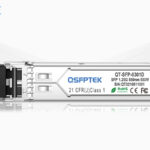Recent technological developments have changed the face of senior support, providing creative answers to the particular problems that older people encounter. These technological advancements, which range from wearable health monitoring devices to telemedicine and smart home technology, are completely changing how elders view aging. Come and discover three revolutionary technologies that are redefining senior life and bringing in a new age of dignified and graceful aging.
Technology for Smart Homes:
The term “smart home technology” refers to a collection of appliances and setups intended to streamline and automate household chores. Residents’ safety and security are improved by these advancements, which include motion sensors, video surveillance systems, and smart locks. Smart home hubs and voice-activated assistants make things more accessible by letting people operate appliances with short commands. Caretakers and medical professionals can benefit from the important data that wearable devices and sensors provide by monitoring health measures. These technological advancements in senior living provide greater security, comfort, and peace of mind, enabling senior citizens to preserve their freedom and be informed about their surroundings and health.
Furthermore, by optimizing the use of resources like water and electricity, smart home technology supports sustainability and energy efficiency. Seniors can easily control the lights and thermostats in their homes, saving money on utilities and minimizing energy waste. This is advantageous for the environment as well as financially, freeing up funds that older folks can use for other significant facets of their lives. By incorporating these eco-friendly features into their living areas, seniors can live more sustainably and benefit from increased comfort and convenience.
Remote healthcare and telemedicine:
Telemedicine and remote healthcare are transforming the way medical services are delivered by utilizing technology to bridge the gap between patients and healthcare practitioners. Thanks to virtual consultations and remote monitoring, people can get medical care from the comfort of their homes without having to visit hospitals. This promotes accessibility as well as convenience for elders, especially those who live in distant places or have limited mobility. Furthermore, telemedicine makes it possible for chronic illnesses to be managed more effectively because it allows medical personnel to remotely check on their patient’s health and act quickly when necessary.
Seniors can benefit greatly from these technological developments in healthcare, including lower healthcare expenses and less exposure to infectious diseases. Older folks can stay healthier overall and reduce their risk of infection by avoiding needless trips to hospitals and clinics. Furthermore, by providing seniors with virtual check-ins and consultations that encourage routine monitoring and prompt interventions, remote healthcare encourages seniors to adopt a more proactive approach to managing their health.
Devices for Wearable Health Monitoring:
Small electronic devices worn on the body to track various health variables and provide real-time feedback are called wearable health monitoring devices. These gadgets, which include fitness trackers and smartwatches, provide continuous monitoring of vital signs, including blood pressure, heart rate, and level of exercise. Wearable technology enables people to keep informed about their health and make well-informed decisions about their well-being by gathering and evaluating this data. Additionally, wearable health monitors can identify anomalies and notify users or carers of possible health problems, allowing for prompt medical condition management and proactive intervention.
Wearable health monitoring technology encourages active and independent living in seniors by providing insightful data about their fitness and overall health. By offering tailored feedback and inspiring elders to lead active lives, these gadgets help them to remain involved in their health. Additionally, because the gathered data can be readily shared during medical consultations for more precise diagnosis and treatment planning, wearable technology might improve communication between elders and their healthcare providers.
Conclusion:
Accepting these developments will provide you with more convenience, better access to healthcare, and more peace of mind, knowing that state-of-the-art technology is watching out for and supporting your well-being. These technologies will become increasingly important as the senior housing environment changes, helping to ensure that seniors can live healthy, fulfilling lives well into their golden years. Accept the opportunities these advancements present and set out on a path to a senior year that is more connected, safe, and rewarding. Embrace the possibilities that these innovations offer, and embark on a journey toward a more connected, secure, and fulfilling life in your senior years, where you can thrive with confidence and independence.




